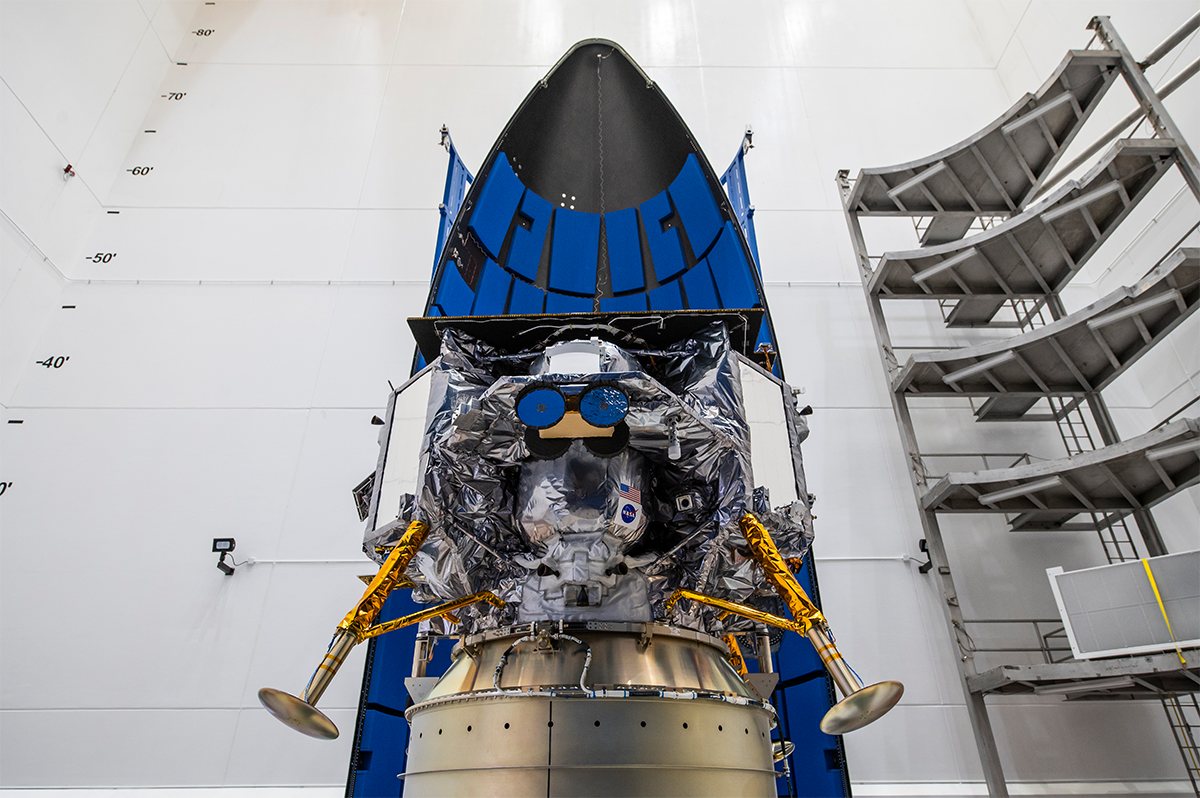Private Peregrine moon lander is stacked on ULA Vulcan rocket ahead of Jan. 8 launch
This could be the first private landing on the moon.

The Peregrine lunar lander has completed all its launch milestones and has been stacked atop the Vulcan Centaur rocket that will carry it to space.
The launch of the first United Launch Alliance (ULA) Vulcan Centaur rocket from Cape Canaveral, Florida, is set for Jan. 8, 2024, with Astrobotic's Peregrine lunar lander expected to attempt a landing on the moon on Feb. 23, 2024.
The landing will make history as not only is Peregrine Astrobotic’s first lander mission, but this is also (possibly) set to be the first time a private spacecraft has set down on the moon, pending the progress of other missions as well (such as an Intuitive Machines launch aboard SpaceX set for no earlier than mid-February.)
"If you've been following the lunar industry, you understand landing on the Moon’s surface is incredibly difficult. With that said, our team has continuously surpassed expectations and demonstrated incredible ingenuity during flight reviews, spacecraft testing, and major hardware integrations," Astrobotic CEO John Thornton said in a statement from the company. “We are ready for launch and for landing.”
Related: Japan's SLIM 'moon sniper' lander arrives in lunar orbit for Christmas
Rocket scientist and president of ULA, Tony Bruno, celebrated the final steps toward the launch of the private lunar lander with a stunning time-lapse video shared on his X feed (formerly Twitter) on Dec. 22.
Now that’s what I call a tree topper! #ToryTimelapse of Peregrine lander being settled atop the #VulcanRocket. Next stop, the Moon pic.twitter.com/4oD1sa5PsBDecember 22, 2023
Though Peregrine has come through three weeks of important final checks and fueling needed to be achieved prior to launch, there is a whole new set of milestones for the spacecraft to clear after blast-off.
Breaking space news, the latest updates on rocket launches, skywatching events and more!
These will begin shortly after launch when the lander will separate from its Vulcan rocket carrier and will power on, following which it will establish communication with ground control on Earth. This communication will flow through the NASA Deep Space Network system to the Astrobotic mission control center in Pittsburgh, allowing Peregrine's operators to determine its position, orientation, and operating health.
Following this and around 40 minutes after separation, ground control will begin sending commands to the lunar lander's propulsion system. One of the first series of commands will tell the thrusters to reorientate Peregrine so its energy-harvesting solar panels are directed toward the sun, allowing them to start powering up the spacecraft's battery.
The team at Astrobotic will then perform maneuvers in Earth's orbit that prepare Peregrine for insertion into an orbit around the moon. The spacecraft will maintain a stable lunar orbit, performing system checks before heading for a historic touchdown at the end of February.
"I have high praise for the professionalism, dedication, and technical expertise demonstrated by the Astrobotic team throughout the complex multi-year Peregrine development program," Peregrine Mission One Director Sharad Bhaskara said in the statement. "Evolving Peregrine from a paper concept to a fully tested spacecraft ready for launch is a remarkable achievement for a small business."

Robert Lea is a science journalist in the U.K. whose articles have been published in Physics World, New Scientist, Astronomy Magazine, All About Space, Newsweek and ZME Science. He also writes about science communication for Elsevier and the European Journal of Physics. Rob holds a bachelor of science degree in physics and astronomy from the U.K.’s Open University. Follow him on Twitter @sciencef1rst.
